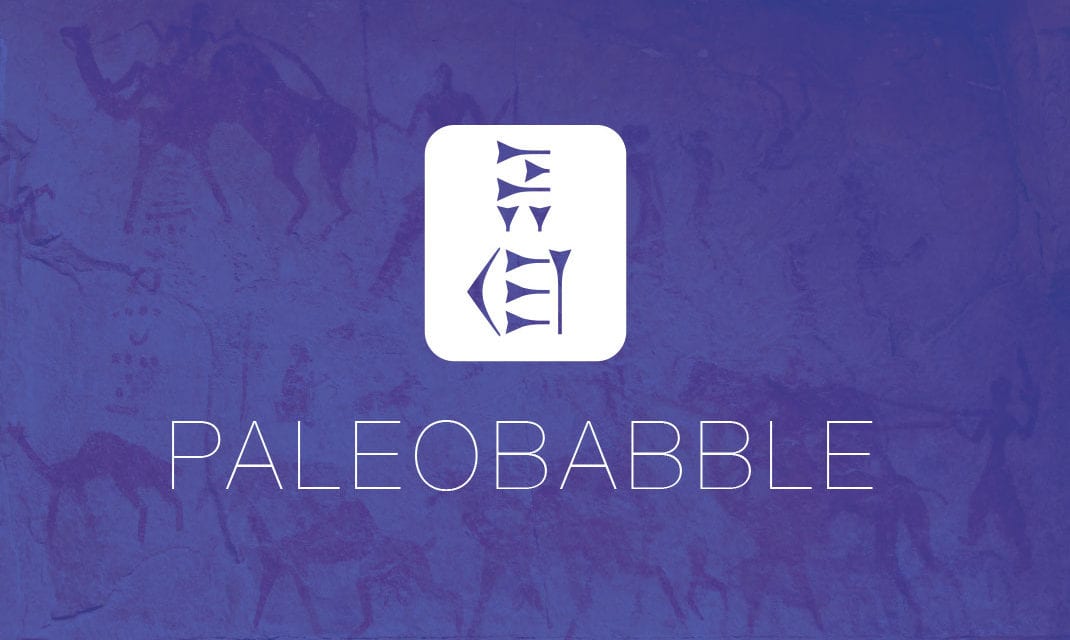Here’s a noteworthy post from the UFO Iconoclasts blog. In a nutshell, it questions (coherently) the notion that there are a plethora (any?) UFO sightings in ancient writers, as so often reported.
My take on this is agreement. I have said many times that these so-called reports nearly always involve astronomical or meteorological phenomena that were well-recognized omens in ancient culture and religion that are simply given a post-1947 spin — that is, flying saucers are completely read into the accounts. I have also noted that ancient writers had sufficient vocabulary to describe a UFO had writers seen one. Ancient Semitic languages (across the board), Greek, and Latin, for example, all had words for “metal”; “metallic”; “silver”; “windows”; “round”; “circle”; etc. There would have been no difficulty at all in terms of language for an ancient person to describe what we think of as a flying saucer. But they don’t.
I would add (and this is on my research plate right now) that I think it extremely important (if my suspicion is correct) that all (?) the pre-20th century reports of fairies and little people that are supposed to speak of the alien greys reported today lack one important element: mention of flying craft. I’ll be working on that to see if it’s the case. That would be big points for the Vallee hypothesis, vs. the ET hypothesis.






Michael:
The absence of flying craft in those “little people” and fairy accounts is, as you note, an important lacuna.
Your expertise in languages is what is lacking for ufologists who seem to think old accounts of things seen in the sky are verbatum accounts of flying saucers.
Moreover, few, old allegorical tales of “omens” (or UFOs, if you will) have them on the ground, and creatures near them are totally absent.
(The Ezekiel account may be an exception.)
RR
RRR: The Ezekiel account, in my view, is the main argument AGAINST flying saucers in the Bible. We know what Ezekiel saw because all the elements of the vision are present in ancient Babylonian iconography (the polaroids of the day). It wasn’t a saucer or space craft – it was a throne, and its descriptions conforms to the sculpture (iconography) of the day. For pictures, see my (too) old web page on this: http://www.sitchiniswrong.com/ezekielnotes.htm. The only thing I’d change on this page is the last part, about the eyes. In the six years since I did this, I’ve learned and been persuaded that “eyes” in these texts are references to stars – and so constellations (the zodiac here). It is no coincidence that the four faces of the beasts are the images of the four cardinal points of the zodiac. Basically, the meaning is simple: Yahweh, the God of Israel, is enthroned in the heavens and controls the cycles of time, the epochs, and is “in control” of the Jewish captivity situation in Babylon – it too will pass (this is the context of Ezekiel 1).
Michael:
Your interpretation of the Ezekiel episode is right on the button, as one expects, but the devil is in the details:
The “man” clothed in linen.
That cloud which filled the inner court yard and house.
The sound of the cherubim wings.
There were (in italics in my Confraternit-Douay/Catholic Bible) four wheels…
And Ezekiel lifted up….metaphorically, or actually?
There’s more, as you know, which prods me to look at the “tale” as something more than a symbolic-induced ramble by an erratic prophet.
Rich
RRR: Good questions, taking them one by one:
Michael:
Your interpretation of the Ezekiel episode is right on the button, as one expects, but the devil is in the details:
The “man†clothed in linen.
** God is frequently described in human form in the OT, most notably the Angel of the LORD – this was one of the focal points in my dissertation. There is also a recent scholarly book out (or maybe it’s another month yet till it’s released) called “The Embodied God” (a German publisher – but in English – and nearly $100, but I swallowed hard and ordered it – someone’s dissertation).
That cloud which filled the inner court yard and house.
** also familiar vocabulary – see 1 Kings 8 (not to mention the many references in the Pentateuch about the glory cloud filling the Tabernacle tent. The writers knew what clouds were and used that word. They had words for “disk” or “box” etc. that they could have used if that was what was seen – but they didn’t.
The sound of the cherubim wings.
** if there were cherubim actually present, we’d expect to hear their wings if they were using them. If it was only a vision or dream, I get sound in my dreams (dialogue, explosions, etc.), so this isn’t unusual.
There were (in italics in my Confraternit-Douay/Catholic Bible) four wheels…
** yes – most scholars who admit to any *astral prophecy* symbolism here (I’m one of them) take this as a reference to comprehensiveness – the four corners of the earth or the four directional points, that sort of thing. It’s used elsewhere (in and outside the Bible) in this way (“God controls everything, all the cycles of the heavens, N, S, E, and W”).
And Ezekiel lifted up….metaphorically, or actually?
** see above about the dream – makes no difference to me, and you will find BOTH in the Bible (frankly, the only way you can really tell “for sure” if something like this is corporeal, or is intended to be understood as corporeal, in the Bible is when the thing / person seen touches or does somethign otherwise tactile to the seer. We don’t actually have that here.
Mike
There’s more, as you know, which prods me to look at the “tale†as something more than a symbolic-induced ramble by an erratic prophet.
Rich